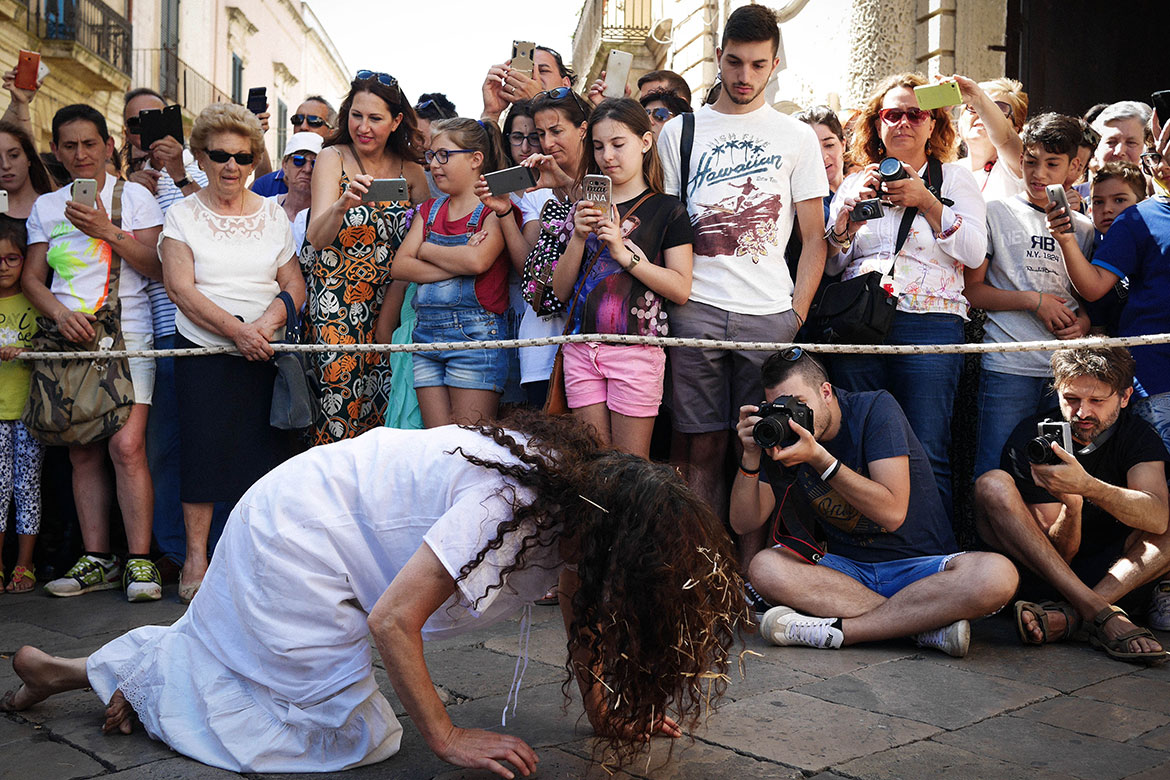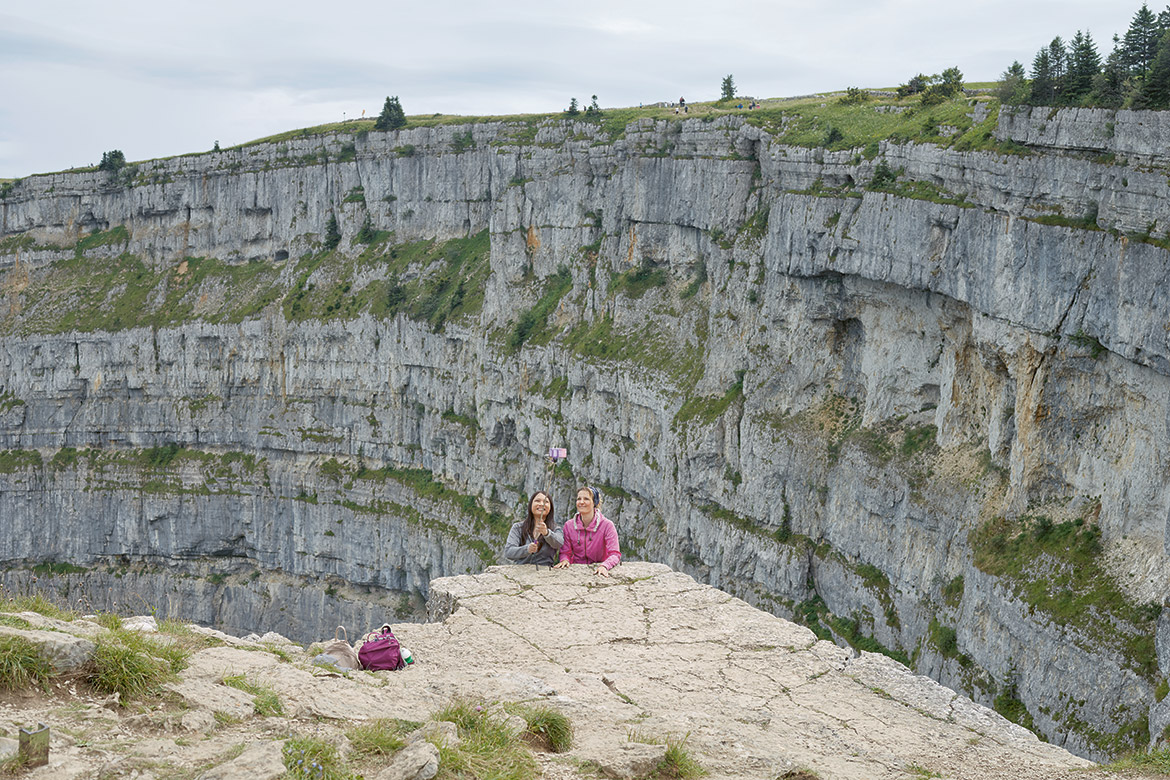IN PICTURES
From shame to pride
In southern Italy, an ancient choreographic ritual has been brought to life through religious and folklore events.

Dancing till you drop: the origins of this local custom known as the ‘tarantella’ remain obscure. | Image: Anja Dreschke
In this photograph, a woman crawls on all fours dressed in a long white shirt and with her hair unbridled, attracting the attention of a crowd of curious people of all ages. It was taken in the region of Apulia in southern Italy during a religious festival and is one of the 20,000 images the anthropologists Michaela Schäuble and Anja Dreschke brought back to the University of Bern where they are conducting research on tarantism, a local spectacle that reached its peak in the 15th and 16th centuries.
At that time, people – mainly marginalised women – would sometimes start dancing ecstatically for several days, even to the point of exhaustion. These dances were accompanied by lively music and could turn into collective hysteria. The origin was attributed to the bite of a spider, the tarantula, whose venom could only be eliminated by dancing. Although the arthropod has since been found innocent, the origin of this phenomenon remains enigmatic. Hypotheses include the expression of a form of psychosis, the consequences of poverty, hard work, the suffocating climate, marginalisation, oppression and trauma, and a way for some women to use their bodies to express themselves freely and publicly.
Tarantism remained in evidence until the 1980s, yet today it is experiencing a religious and folkloric revitalisation thanks to festivals dedicated to the Saints, e.g., the Feast of Saints Peter and Paul, which takes place at the end of June in the city of Galatina. Women reproduce this ritual for the public. In this context, the boundaries between true ecstasy and theatrical staging are regularly renegotiated, says Schäuble.
She also points out that these festivities are in fact tourist and commercial attractions with music, entertainment and carousels for children. Tarantism was once shameful and associated with disease, but today it is a source of popular pride in the cultural heritage of the Apulia region.




